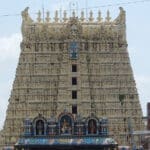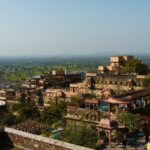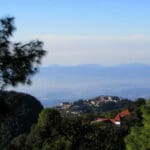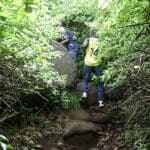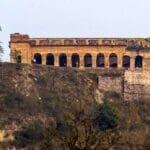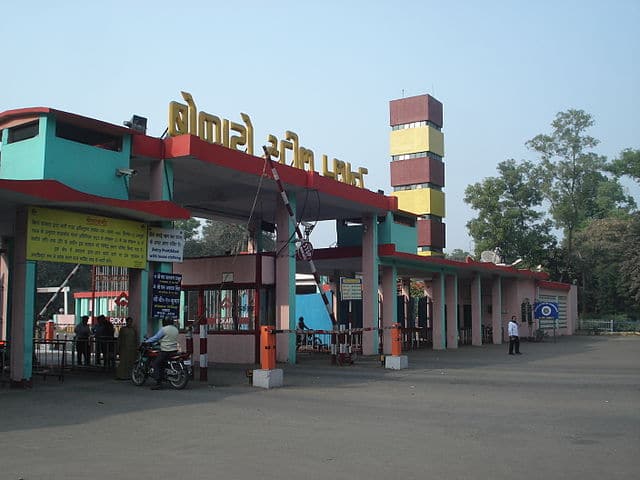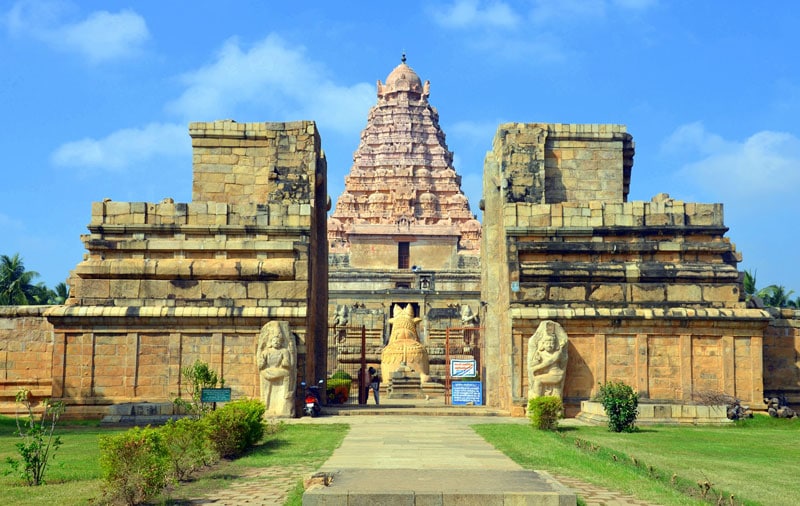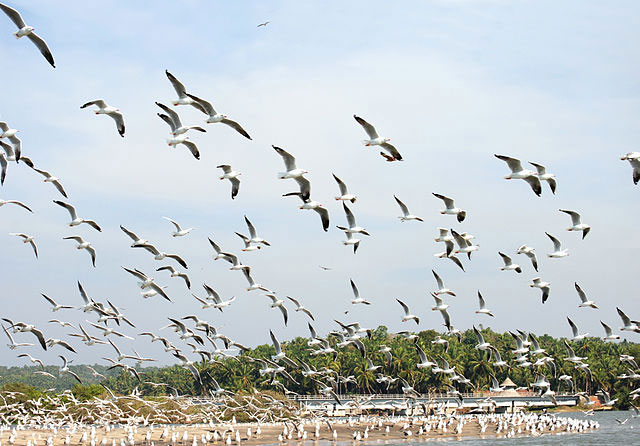The Thiruvalluvar Statue in Kanyakumari is not just a marvel of stone and sculpture, but an enduring testament to the universal values, timeless wisdom, and cultural depth that the Tamil civilization has bestowed upon the world. Commanding the confluence of the three seas—Bay of Bengal, Arabian Sea, and Indian Ocean—it attracts countless pilgrims, tourists, scholars, and dignitaries every year. The presence of this resplendent monument is a reminder of how art, philosophy, and heritage can unite across time and geographies.
Historical Genesis: The Vision Behind the Monument
Thiruvalluvar and His Legacy
Thiruvalluvar, often regarded as one of humanity’s greatest ethical philosophers and poets, composed the Tirukkural, a collection of 1,330 couplets. These couplets are divided into three books: Aram (Virtue), Porul (Wealth), and Inbam (Love). Each of these explores not only the nuances of individual conduct and governance but also delves deeply into the fabrics of social justice, family, political ethics, and love.
The idea to build a statue honoring Thiruvalluvar stems from a long-felt desire among Tamils and scholars globally, not only to celebrate the poet-philosopher but also to project the message of the Tirukkural—universal brotherhood and values—onto the world stage.
Project Realization
In 1975, the government of Tamil Nadu officially announced its intention to immortalize Thiruvalluvar’s legacy with a grand statue. After years of nuanced architectural planning, dedication, and overcoming logistical as well as environmental challenges, the statue was formally unveiled on January 1, 2000, in the presence of thousands who traveled from every corner of the globe.
Architectural Grandeur: A Marvel in Granite and Vision
Design and Symbolism
Standing at 133 feet, the statue’s height is a deliberate nod to the 133 chapters of the Tirukkural. The underlying pedestal, measuring 38 feet, invokes the three main values described in the Tirukkural, divided meticulously into sections symbolizing virtue, wealth, and love.
The statue’s right hand, with three extended fingers, is seen pointing towards the sky, embodying the core teachings embraced in Tirukkural:
-
Virtue (அறம், Aram)
-
Wealth (பொருள், Porul)
-
Love (இன்பம், Inbam)
The left hand resting in a calm posture signifies serenity, wisdom, and meditation. Every muscle, robe fold, and facial feature is sculpted with stunning detail, capturing a sense of majesty intertwined seamlessly with peace.
Construction and Engineering Brilliance
-
Materials: More than 3,000 granite blocks, weighing over 7,000 tons, sourced from various South Indian quarries.
-
Artisans: Over 500 sculptors and craftsmen, led by Padma Bhushan Dr. V. Ganapati Sthapati, labored for nearly a decade. Their expertise in Shilpa Shastra—ancient Indian sculpture traditions—infused contemporary engineering with artistic mastery.
-
Structural Features:
-
Designed to withstand major earthquakes and cyclonic storms due to deep foundation pilings and interlocking granite blocks.
-
Lead sheeting between stones ensures both strength and flexibility.
-
Maintenance access points discreetly built in for cleaning and repairs.
-
Pedestal and Interior Design
The pedestal includes a circular meditation hall with inscriptions from the Tirukkural on marble plaques—inviting every visitor to pause, reflect, and absorb the wisdom of Thiruvalluvar. This space, often used for yoga, meditation, and scholarly discussions, serves as a bridge between the physical and spiritual dimensions of the monument.
Location, Landscape, and Environment
Strategic Placement
The Thiruvalluvar Statue is poised off the coast of Kanyakumari, the southernmost tip of the Indian mainland. Facing the endless ocean and caressed by winds from all three seas, its unique geographic position is both symbolic and logistical.
-
Proximity: Close to the Vivekananda Rock Memorial, which commemorates the spot where Swami Vivekananda meditated before his historic Chicago address.
-
Scenery: Offers unhindered 360-degree views—sunrise, sunset, and moonrise are especially popular with visitors, who often wait hours for these natural spectacles.
Ecological Sensitivity
Situated within a fragile marine ecosystem, construction and maintenance have prioritized minimal environmental disruption. Ferry operators and local authorities regularly organize beach clean-ups and curtail crowding to preserve natural harmony.
Visiting the Thiruvalluvar Statue: Practical Details
Access and Transportation
-
Ferry Terminal: Main access is via ferry boats operated by Kanyakumari Ferry Service, running from early morning until dusk, subject to sea conditions.
-
Timings: 8:00 AM to 4:30 PM (may vary during festivals or adverse weather).
-
Tickets: Combined ferry tickets for both Thiruvalluvar Statue and Vivekananda Rock Memorial (nominal fee, special rates for children and senior citizens).
Onsite Amenities
-
Footwear and Dress: Visitors must remove shoes before entering certain pedestal sections; modest attire is encouraged.
-
Safety: Guardrails, life jackets on ferries, CCTV surveillance, and security personnel ensure visitor safety.
-
Accessibility: While steps lead up to the statue’s base, ramps and wheelchair assistance are available for differently abled visitors.
Ideal Visiting Season
-
October to March: Pleasant weather, calm seas, and festive events make this period highly recommended.
-
Special Occasions: Thiruvalluvar Day (usually January), Pongal, and Tamil New Year draw additional cultural events and crowds.
In-Depth Look at Tirukkural and Its Global Impact
Tirukkural’s Ethical Blueprint
The Tirukkural transcends time and geography, offering practical wisdom for personal integrity, governance, and interpersonal love. It stands apart from other ancient texts for its secular, universal approach—making it a preferred reference for ethics across religious, corporate, and social boundaries.
Translations and World Recognition
-
Translated into over 40 international languages, including English, French, Russian, Japanese, Arabic, and even Esperanto.
-
Cited by renowned personalities such as Mahatma Gandhi and Leo Tolstoy.
-
Incorporated in educational curriculums across Tamil Nadu and respected as a global moral compass.
Influence in Modern Society
Tirukkural’s messages on honesty, environmental stewardship, gender equality, and non-violence are promoted in schools, administrative guidelines, and leadership philosophies worldwide.
Festivals, Ceremonies, and Cultural Life Around the Statue
Annual Thiruvalluvar Day
-
Observed in January, marked by grand public readings of Tirukkural, music and dance performances, and speeches by cultural icons and government leaders.
-
Awards presented to scholars and artists who advance Thiruvalluvar’s message globally.
Pongal, Deepavali, and Other Celebrations
-
Statue and surroundings are illuminated in vibrant colors, with traditional Kolam decorations and live folk artistry.
-
The statue is often the focal point for local communities to gather, celebrate, and remind themselves of their shared heritage.
Educational Programs and Interpretive Experiences
Guided Tours and Exhibitions
-
Regular guided tours (in Tamil, English, and Hindi) unravel the philosophical, historical, and technical marvels of the site.
-
Digital kiosks and permanent exhibits display historical documents, photographs of the statue’s construction, and interactive explanations of Tirukkural’s themes.
Academic and Literary Events
-
Seminars, debates, and workshops on topics ranging from Tamil literature to world ethics to architectural engineering, often feature at the meditation hall.
-
Poetry recitations, essay competitions, and public debates organized on special days involving students from across India.
Comparative Analysis: Thiruvalluvar Statue Among Other Indian Icons
| Monument | Height | Location | Theme/Person Commemorated | Year Completed |
|---|---|---|---|---|
| Thiruvalluvar Statue | 133ft | Kanyakumari | Thiruvalluvar (Philosophy) | 2000 |
| Statue of Unity | 597ft | Gujarat | Sardar Vallabhbhai Patel | 2018 |
| Buddha Statue | 58ft | Hyderabad | Gautama Buddha (Spirituality) | 1992 |
| Vivekananda Rock Memorial | N/A | Kanyakumari | Swami Vivekananda | 1970 |
The Thiruvalluvar Statue’s unique distinction is in its celebration of literature and ethics, while others often celebrate political, spiritual, or unifying personalities.
Environmental Conservation Efforts
Eco-Friendly Initiatives
-
LED and energy-efficient lighting to protect night-time wildlife and reduce energy use.
-
Strict no-littering policies and recycling drives organized by local schools.
-
Educational signage for visitors on protecting marine and birdlife.
Community Involvement
Local fishermen’s associations, youth clubs, and NGOs actively partner with government officials to maintain the site’s cleanliness and orderliness, making the Thiruvalluvar Statue not only a site to visit but a model for sustainable tourism.
Myths, Legends, and Cultural Narratives
A number of legends infuse the statue with deeper meaning. One widely held belief is that witnessing dawn at the statue brings clarity and inner peace. The convergence of the three seas is frequently cited in Tamil literature and local lore as a metaphor for the union of body, mind, and soul.
Children often hear tales of Thiruvalluvar’s wisdom guiding kings and commoners alike through mystical visions at the oceanfront—stories that sustain the philosophical heritage across generations.
The Thiruvalluvar Statue in Today’s Media
Documentaries by national and international networks regularly feature the monument as a highlight of Indian heritage tourism. Leading travel magazines rate it among India’s “must-see” wonders, and it frequently appears in school textbooks and cultural calendars.
Original literary works, films, and artistic installations continue to reinterpret the statue and Tirukkural through a modern lens.
Nearby Attractions: Extending the Kanyakumari Experience
-
Vivekananda Rock Memorial: A spiritual retreat and meditation center, honoring the great monk’s enlightenment.
-
Kanyakumari Beach: Known for its picturesque sunrise and sunset, where the sky and water seem to merge.
-
Padmanabhapuram Palace: A wooden architectural wonder from the Travancore era.
-
Suchindram Temple: Famed for its musical pillars, giant Hanuman idol, and Dravidian architectural beauty.
-
Gandhi Memorial Mandapam: Erected at the site where the ashes of Mahatma Gandhi were kept before immersion.
Visitor Insights and Expert Recommendations
-
Arrive early, especially on weekends, to enjoy tranquil views.
-
Allocate at least two hours to fully appreciate both the meditation hall and the panoramic terraces.
-
Combine visits with local markets for handicrafts and authentic South Indian cuisine.
-
Photography enthusiasts should bring telephoto lenses to capture marine birds and the interplay of sunlight on granite.
Frequently Asked Questions (FAQs)
-
What is the Thiruvalluvar Statue?
A monumental granite statue honoring Thiruvalluvar, the legendary Tamil poet and philosopher, author of the Tirukkural. -
Where is it located?
On a small island off Kanyakumari, Tamil Nadu, at the southernmost tip of the Indian mainland. -
Who designed the statue?
Chief architect and sculptor was Dr. V. Ganapati Sthapati. -
How tall is it?
The statue stands at 133ft, with a 38ft pedestal, totaling 171ft. -
How do you reach the statue?
Via regular ferry service from Kanyakumari beach jetty. -
Is there an entry fee?
Yes, a nominal fee for the ferry, allowing entry to both the statue and Vivekananda Rock Memorial. -
Can people climb up the statue?
Visitors can climb to the base (pedestal) level for panoramic views; interior statue access is restricted. -
What’s the best time to visit?
October to March is ideal for pleasant weather and festivals. -
What is Tirukkural?
An ancient Tamil text of 1,330 couplets on ethics, statecraft, and love. -
Are there guided tours?
Yes, guides are available in multiple languages. -
Any religious significance?
The site is revered culturally and spiritually, representing Tamil heritage and Indian unity. -
Can events be hosted at the site?
Cultural and educational events are regularly held in the meditation hall. -
Are photography and videography allowed?
Yes, but drone usage may need special permissions. -
Is the site accessible for disabled visitors?
Ramps and assistance are provided at key locations. -
Is it illuminated at night?
The statue is beautifully lit after dusk, creating a mesmerizing sight.







